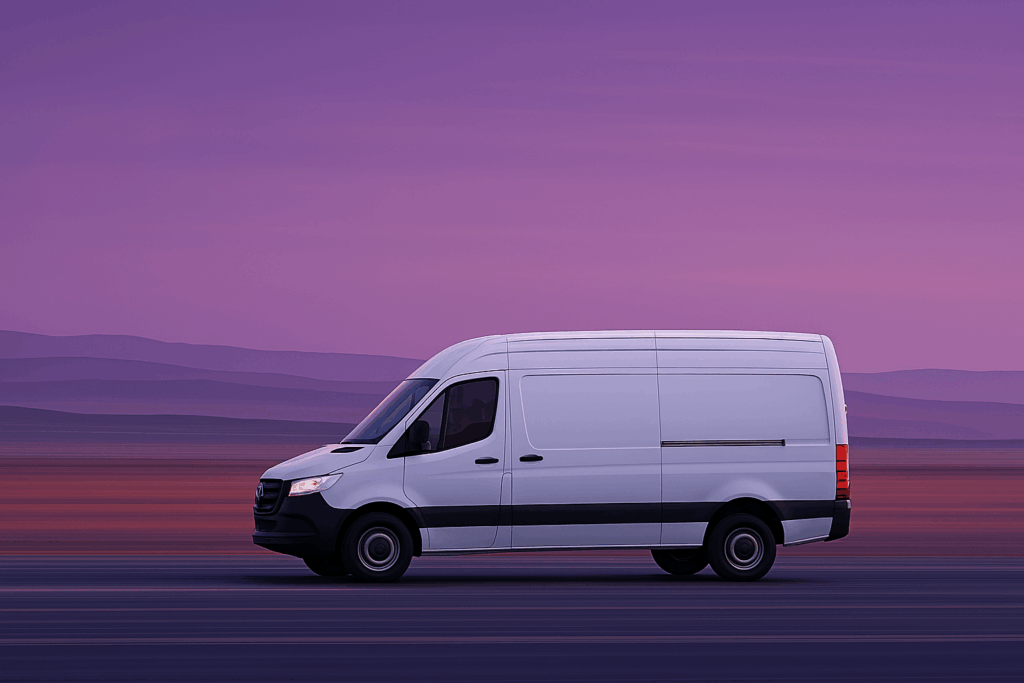Thinking about going out on your own in the trucking world? Becoming an owner-operator means more control over your work—and the potential to earn more doing it. But it also means taking on the responsibility that comes with running a business. You’ll be making decisions about equipment, finances, insurance, and compliance. And, of course, you’ll need to find consistent freight to keep the wheels turning.
It’s a big step, but with a thoughtful plan, it can be a smart one. Whether you’re new to trucking or have been driving for years, this guide will walk you through what it takes to become an owner-operator and how the right tools can make the difference between barely staying afloat and building something that lasts.
What is an Owner-Operator?
Many truck drivers start out as company drivers—paid employees driving a truck that’s owned, insured, and maintained by the carrier. You pick up the loads they assign, follow their routes, and have limited say in how things run. For some, that’s enough. But if you’re looking for more control over your work and your earnings, becoming an owner-operator opens the door.
As an owner-op, you either buy or lease your own truck and operate as an independent business. You make the decisions—and take on the risks. According to U.S. Bureau of Labor Statistics, about 16% of truck drivers are owner-operators, choosing to run independently rather than staying in a company seat.
Owner-Op Independent Contractor vs. Own Authority
Owner-operators can choose to lease on with a carrier as an independent contractor or to operate under their own authority. The contractor path allows you to operate under the hiring carrier’s authority and take advantage of their insurance and permits. You’re still running your own truck, but with less paperwork and administrative responsibility.
Operating under your own authority means you’re fully independent—you handle your own compliance, find your own freight, and carry your own insurance. It gives you more control and flexibility, but also more liability and overhead. You’ll need to weigh freedom against the time and cost of going fully solo.
Why Become an Owner-Operator?
If you want more say in how you work—and the chance to keep more money in your pocket —owner-operator life has its appeal. You’re in control of your truck, your schedule, and your decisions.
Benefits include:
- Choosing your own loads, lanes, and home time
- Potential to earn more than a company driver
- Freedom to pick your truck, equipment, and maintenance plan
- Opportunity to build your own brand and long-term business
But that freedom comes with added responsibility:
- You cover your own costs—fuel, maintenance, insurance, taxes
- You’re responsible for staying compliant with DOT regulations
- Finding steady freight and managing your cash flow is on you
Owning your operation can be a smart move, but it’s not something to take lightly. Success depends on having a plan, treating it like a business, and using tools that help you stay profitable from day one.
How to Get Started as an Owner-Operator
Buying a truck is just one piece of the puzzle. To be a successful owner-op, you’ll need to set up a business, get familiar with regulations, and make smart financial decisions. Here’s a step-by-step look at what it takes to get started.
1. Get Your CDL
To operate a commercial vehicle, you’ll need a valid Commercial Driver’s License (CDL). There are three classes: Class A allows you to drive combination vehicles like tractor-trailers, Class B covers straight trucks and box trucks, and Class C is typically used for passenger vans or hazardous materials. If you plan to haul heavy freight across state lines, a Class A CDL is required.
Requirements vary by state, but most training programs include classroom hours, hands-on driving, and exams. You’ll also need to pass a DOT physical and meet age and residency requirements. Choose a program that fits your schedule and gets you behind the wheel.
2. Establish a Business
Once you’re licensed, the next step is registering your business. You’ll need an Employer Identification Number (EIN) from the IRS and a legal business name. You’ll also need to check your state’s DOT requirements for registration.
When it comes to business structure, most owner-operators choose between a sole proprietorship and a limited liability company (LLC). A sole proprietorship is simple to set up, but it doesn’t separate your personal and business finances. An LLC adds a layer of legal protection, which can help safeguard your personal assets if issues arise on the business side.
3. Obtain MC and USDOT Numbers
To operate under your own authority, you’ll need to register with the Federal Motor Carrier Safety Administration (FMCSA). A USDOT Number is used to track safety and compliance data, while an MC number gives you the authority to haul freight as a for-hire carrier. *Note: FMCSA is phasing out the MC number system in 2025 and transitioning strictly to USDOT numbers.
Once your authority is published, you’re required to file Form BOC-3, which designates a process agent in every state where you operate. This form must be filed within 90 days and is a standard part of setting up your trucking business legally.
4. Purchase or Lease a Truck
This is one of the biggest decisions you’ll make as an owner-operator. Start by deciding whether to buy or lease. Leasing can lower upfront costs and sometimes includes maintenance, but it may limit flexibility. Buying gives you full control and equity, but requires more capital and long-term responsibility.
You’ll also need to weigh new vs. used. New trucks come with warranties and fewer immediate repairs but cost more. Used trucks are cheaper but may need more maintenance upfront.
Financing is available through commercial lenders, dealerships, and equipment leasing companies. Consider total cost of ownership—not just monthly payments—when making your decision.
5. Obtain Trucking Insurance
Before you can hit the road, you’ll need to secure proper insurance coverage. At a minimum, most carriers and the FMCSA require:
- Primary liability – covers damage or injury to others
- Cargo insurance – protects the freight you’re hauling
- Physical damage – covers your own truck in case of accidents or theft
You may also need non-trucking liability or occupational accident insurance depending on your setup. Premiums can vary widely, so it’s smart to work with an insurance provider that specializes in trucking. They’ll understand industry requirements and can help you avoid coverage gaps that could cost you down the road.
6. Learn About Compliance
As a business owner in a heavily regulated industry, staying compliant with federal and state rules is essential. You’ll need to follow Hours of Service (HOS) regulations to track driving time and rest breaks, using an electronic logging device (ELD) if required.
You’ll also need to conduct regular driver vehicle inspection reports (DVIRs), stay current on truck maintenance, and comply with drug and alcohol testing rules—especially if you plan to hire drivers in the future.
Fines for violations can add up quickly, and safety ratings can impact your ability to book loads. Staying organized from the start protects both your business and your reputation.
7. Find Freight
Once you’re up and running, finding reliable freight is the key to keeping your business moving. Many new owner-operators start with load boards, which let you browse available freight and negotiate rates directly. You can also work with freight brokers or dispatchers who help match you with shippers and lanes—but keep in mind they take a cut.
Over time, building relationships with shippers directly can lead to more consistent, better-paying loads. Digital tools like load-matching apps and transportation management systems can also help you track opportunities and manage bookings. The more efficient you are, the more profitable your routes become.
8. Manage Costs
Keeping your operation profitable means staying ahead of your expenses, and small decisions can make a big difference over time. Fuel is one of your biggest costs, so use fuel card programs and plan efficient routes to reduce waste. Preventive maintenance can also save thousands by catching issues before they turn into major problems that can take you off the road for days or even weeks.
Technology plays a big role in managing costs in today’s trucking environment. Telematics systems can track fuel usage, idle time, and engine diagnostics in real time, giving you the insights you need to cut costs and avoid downtime. Digital tools can also help with route planning, load matching, and recordkeeping. Remember, the more visibility you have into how your business runs, the easier it is to stay lean and make smart, informed decisions.
Run Smarter with Solera Fleet Solutions
Running your own operation takes more than a truck and a plan. Once you’re on the road, the real challenge is keeping everything efficient—staying compliant, minimizing downtime, and making smart decisions with the information you’ve got. That’s where the right tools matter.
Solera Fleet Solutions gives owner-operators access to the same technology trusted by larger fleets—but without the complexity. Their load board and transportation management system (TMS) help you manage freight more efficiently and reduce time spent searching for your next job. Advanced ELDs and electronic DVIRs take the guesswork out of compliance and inspections, and tax tools simplify what used to be hours of paperwork.
You can also monitor fuel usage and get early warnings about maintenance needs—all from a single platform. It’s not about adding more to your plate—it’s about making the hard parts easier to manage.And when you’re ready to grow, Solera grows with you. Whether you stay solo or start building a fleet, you’ll have the tools in place to scale your business the right way. Contact the experts at Solera to learn more and get started today.




